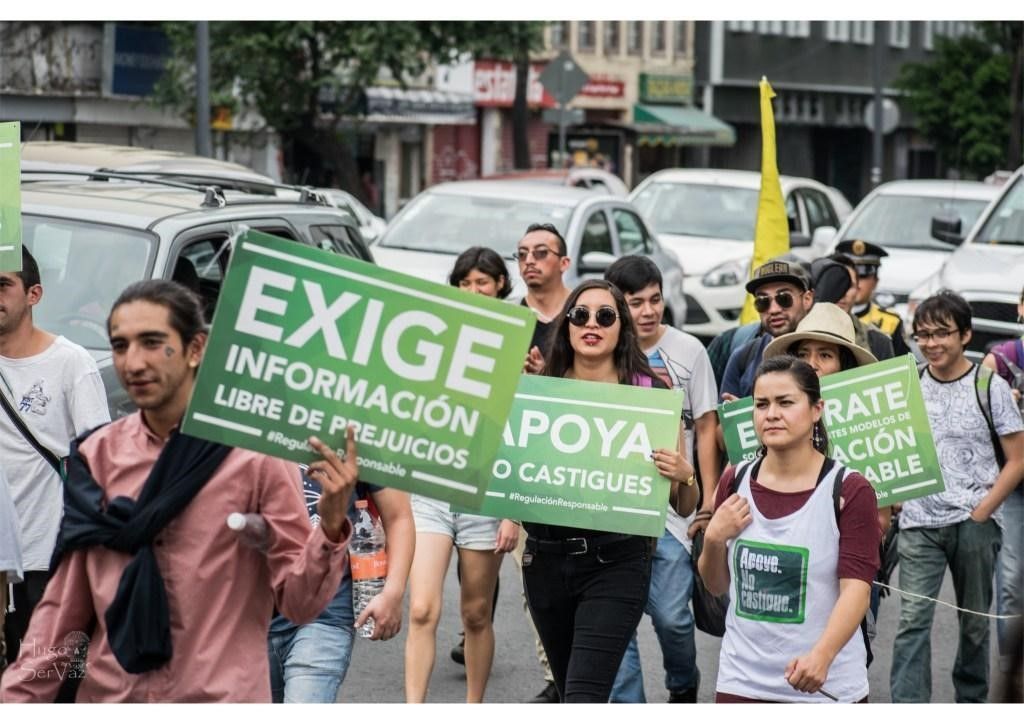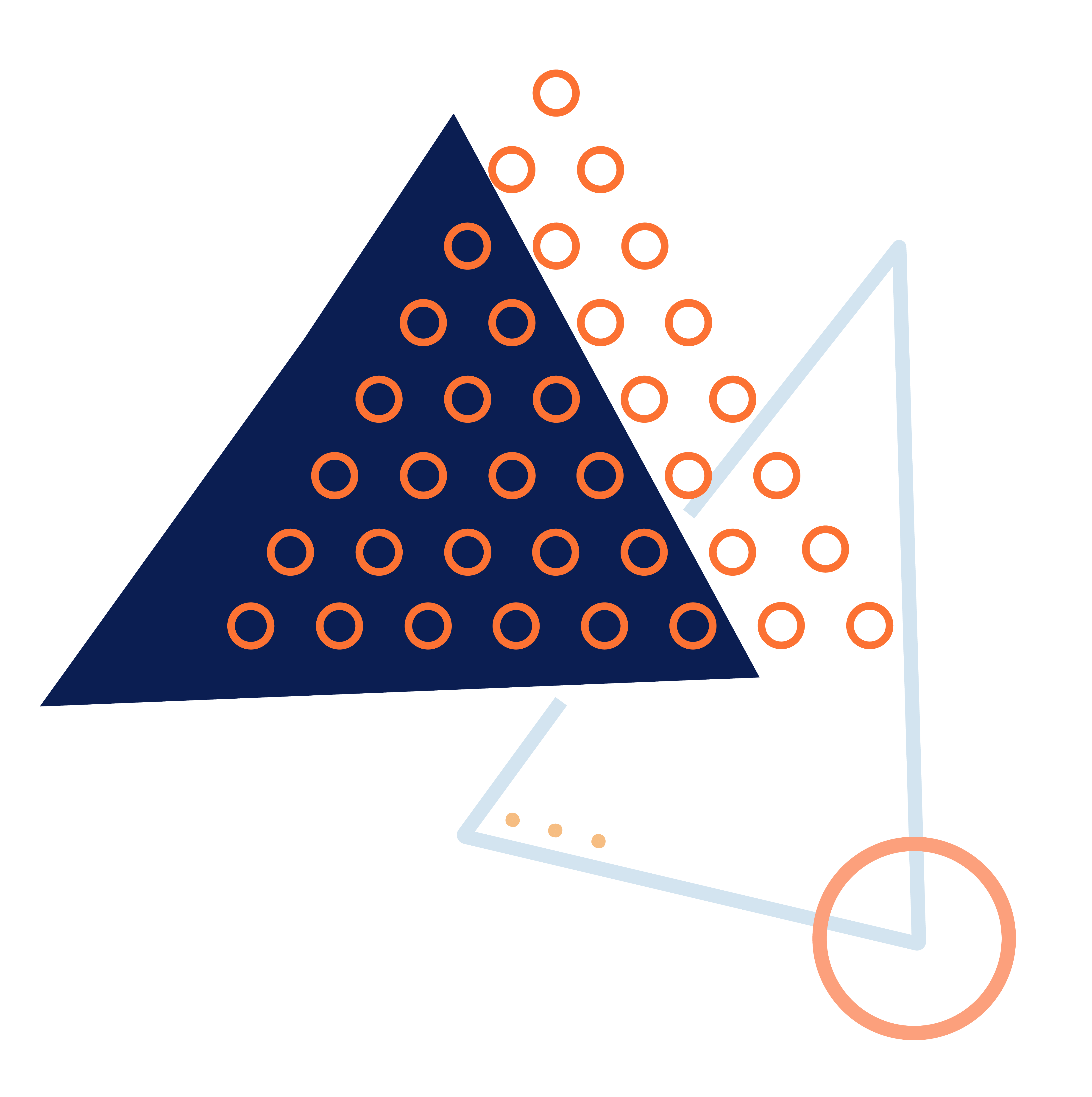

25 January 2023
Article
Young people rolling a joint peace in Mexico
Jorge Herrera Valderrábano
Young people rolling a joint peace in Mexico
Since the beginning of the 20th century, the United States has promoted a campaign to prohibit, persecute and prosecute the production and use of a variety of psychoactive substances.(1) Throughout the decades, the war on drugs has been incorporated into the international legal system yet has not delivered the expected outcomes,(2) in turn creating more problems than solutions.
Mexico has witnessed the impacts of each of the “unintended consequences” that the UNODC identified(3) as resulting from the punitive drug control system, such as the creation of a profitable illegal market, stigma, and the criminalization of drug use.(4,5) Prohibitionist policies have increased risks for young people, posing higher barriers to the delivery of public services in key areas, such as health,(6) and justice,(7) producing avoidable harms.
Young people in Mexico live in a context of lack of guarantee and effective access to their human rights. According to the 2020 Census, the country is home to 31 million young people between 15 to 29 years of age, representing 25% of the total population. From this total, only 3 out of 10 young people have access to education,(8) 15 million young people are economically active, and half of the 14 million of those working receive an income below the poverty line.(9, 10)
The security strategy based on combatting drug trafficking in Mexico has resulted in an environment of violence that, added to the situation of marginalization and social inequality, has led young people to seek opportunities either in illegal activities or in the armed forces. Moreover, youth-led groups that are resisting, use mobilizations as a strategy to make visible the need for social and political change towards peace and social justice.(11,12)
Young people escaping from the violence
The violence generated because of the continuous conflicts between the State security elements and criminal organizations has been the main cause of internal forced displacement with more than 260,000 people displaced since 2006, 27.5% of whom are younger than 19 years old.(13) Sometimes families decide to send their youngest children away with relatives because it is easier for them to adapt to another context, and their older siblings stay to support the parents in other tasks. Research shows that in 20 of the 24 episodes of massive forced displacement that occurred in 2020, there is a explicit mention of wide affectations to children.(14)
This punitive approach is posing higher risks to young people in Mexico. According to the organization REINSERTA, more than 30,000 Mexican children have been recruited into organized crime, receiving a payment of up to 35,000 pesos per month (1,600 USD).(15) Other organizations such as the Network for the Rights of Children in Mexico (Redim) estimate that around 250,000 are currently at risk of being recruited by some type of organized criminal group , due to their social characteristics and the absence of protections by the State.(16) Promoting the engagement of young people with public institutions and within their own communities could prevent them from becoming involved in criminal activities.(17)
Grave human rights violations, the lack of reducing violence, and the incoming government administration in 2018 led to a gradual shift in drug policy, as well as the arms and security approach. President Andrés Manuel López Obrador declared the end of the war on drugs,(18) and although the military deployment and stigmatizing narrative on drug use continues,(19) Mexico drafted a plan on peace and security that still requires full implementation.(20)
Young people moving towards better drug policies
Punitive drug policies are the result of a paternalistic(21) and adult-centric view(22) from government authorities who rely on misinformation to address drug use. This has had an impact not only on the people that have been forced to escape from violence, but those that have been unfairly incarcerated as well. This approach needs to change, to incorporate the voices of young people in the discussion. Drug policy reforms should be undertaken in conjunction with citizens to design public policies that meet community needs. Of course, a youth approach is a key element in this process.
Solutions from the government
In recent years, the National Youth Institute has worked to implement a social program with the Ministry of Health, in the frame of the National Strategy to Prevent Addictions, titled ‘Juntos por la Paz’ (Together for Peace).(23) This is a policy based on a public health and human rights approach aiming to bring information and services closer to young people in vulnerable conditions, through social media and other communications channels, as well as in designated centers around the country named ‘Peace Clubs’ where people can access workshops and other resources useful for their personal and professional development.
Despite the efforts, this program has received wide criticism because of the stigmatizing approach it has, and the lack of evidence-based information used in their strategy, although there are other worthy initiatives. Moreover, the Youth Institute also recently announced the creation of a 24-hour phone line assisting young people in need. The strategy is clearly embracing mental health and addressing the factors that can prevent criminality among young people.
Another project focusing on youth is the Network of Youth for Peace that the Ministry of Security and Citizen Protection convened in 2021. Around 100 young people from every state in the country were called to participate in an online education program about the youth, peace, and security agenda, to support other young people in the implementation of local activities.(24) The initiative is being sponsored by the UNDP, UNFPA and the Friedrich Stiftung Foundation, and is envisioning a second stage connecting funds with community projects.
Solutions led by civil society organizations
Support Don’t Punish is a global campaign held each year on June 26th to mark and revindicate the international day against drug abuse and illicit trafficking. It is a community response to prohibition, where hundreds of organizations and communities around the world mobilize to provide information about the impacts of repressive policies and the benefits of policy innovations based on human rights.(25)
In Mexico, the Support Don’t Punish Festival is an initiative carried out by young people who draft strategies for increasing the availability of harm reduction strategies, promote effective dialogues on the responsible use of drugs among other young people and to explore alternatives to prohibition. Stigma, human rights, harm reduction, art and culture are among the many topics covered in the discussions, keynote conferences, workshops and other activities that comprise the Festival.

Figure 1. Support Don’t Punish Festival, Mexico City, 2018
Since 2018 the Festival has organized activities that are based on social resistance and collective action. The festival encourages people to organize activities that actively engage with young people from diverse contexts. In 2019, for example, the event included a march from the main venue to a nearby park where a street fair was installed, which included civil society organizations providing information on harm reduction, pleasure enhancement and the responsible use of drugs. At the end, a concert was held, featuring bands which addressed topics regarding the impacts of repressive policies in young people. Party spaces are also a means to express proposals including better policies on drugs, steps towards peace and promoting social justice.

Figure 2. Protest March from the Casa Memoria Indómita Museum to the Lázaro Cárdenas Park, II Support Don’t Punish Festival, Mexico City, 2019
The war on drugs has disproportionately affected vulnerable communities, particularly young people who are now demonstrating to demand better drug policy reforms, and are breaking the generational breach by creating safe spaces to catalyze conversations that can inspire innovative solutions. It is evident that both civil society and government institutions are learning how to continue engaging young people on public issues related to drugs, their use, and their policies. Young people are building peace through drug policy reform in Mexico. However, there is still a need to support and propel these efforts, and take them closer to academia, decision-makers, and other relevant sectors.
The security challenges and lack of access to basic human rights, from education to healthcare are motivating people from various sectors and with intersecting identities to mobilize. Collective action is defining this social change movement and innovative actions are increasing young people’s capacity. Only by opening spaces to youth in the public sphere will we be able to come up with policies and services that meet community and individual needs. Intergenerational and multi-sectoral partnerships are essential for the implementation of the youth, peace and security agenda, and Mexico is walking towards that direction.
Jorge Herrera Valderrábano
Jorge Herrera Valderrábano (@jhvalderrabano) is a human rights advocate holding B.A.s in International Relations and Social Work. Jorge is the cofounder of Ágora Mexico and Instituto RIA, co-sponsor of the Support Don’t Punish Festival, and member of the United Network of Young Peacebuilders.
References
(1)DPA. (2020). A history of the Drug War. Drug Policy Alliance. Available at: https://drugpolicy.org/issues/brief-history-drug-war
(2) GCDP. (2021). Time to End Prohibition. Global Commission on Drug Policy. Available at: https://www.globalcommissionondrugs.org/reports/time-to-end-prohibition
(3) United Nations Office on Drugs and Crime. World Drug Report, 2008. United Nations System.
(4) CMDPDH. Violaciones graves a derechos humanos en la guerra contra las drogas en México. Comisión Mexicana de Defensa y Promoción de los Derechos Humanos. Available at: https://www.cmdpdh.org/publicaciones-pdf/cmdpdh-violaciones-graves-a-ddhh-en-la-guerra-contra-las-drogas-en-mexico.pdf
(5)Martínez-Fernandes, Andres. (2021). Money Laundering and Corruption in Mexico: Confronting Threats to Prosperity, Security, and the US-Mexico Relationship. American Enterprise Institute. Available at: https://www.aei.org/research-products/report/money-laundering-and-corruption-in-mexico-confronting-threats-to-prosperity-security-and-the-us-mexico-relationship/
(6)Cheng et al. (2016). High prevalence of Assisted Injection Among Street-Involved Youth in a Canadian Setting. Europe PMC. 2016. Available at: http://europepmc.org/abstract/med/26040989
(7)Cortés, R., Muro, A. y Ordorika, A. (2021). Historias de detención por posesión simple. Elementa DDHH y ReverdeSer Colectivo. Available at: https://www.elementa.co/wp-content/uploads/2021/03/informe-resultados-narcomenudeo.pdf
(8)Coneval presents the 2018 and 2020 multidimensional poverty estimates. CONEVAL. Available in: https://www.coneval.org.mx/SalaPrensa/Comunicadosprensa/Documents/2021/COMUNICADO_009_MEDICION_POBREZA_2020.pdf
(9)Statistics about the International Daythat of Youth. INEGI. Available in: https://www.inegi.org.mx/contenidos/saladeprensa/aproposito/2020/Juventud2020_Nal.pdf
(10)Coneval presents the 2018 and 2020 multidimensional poverty estimates. CONEVAL. Available in: https://www.coneval.org.mx/SalaPrensa/Comunicadosprensa/Documents/2021/COMUNICADO_009_MEDICION_POBREZA_2020.pdf
(11) Aristegui News, "Juanito pistola", child HITMAN of the CDN killed in Nuevo Laredo, August 29, 2019; Excelsior'El Ponchis', the child hitman who learned to kill at the age of 11, 3 September 2019; Televisa Newscasts, 'El Brackets' emerges, child hitman of the 'Northeast Cartel', 18 September 2019
(12)Expansion The abandonment of the State led us to arm children, say self-defense groups in the face of claims, January 23, 2020
(13) SIPINNA. (2022). El desplazamiento forzado interno de niñas, niños y adolescentes y sus familias requiere acciones afirmativas para protegerles de violencias. Gobierno de Mexico. Available at: https://www.gob.mx/sipinna/articulos/el-desplazamiento-forzado-interno-de-ninas-ninos-adolescentes-y-sus-familias-requiere-acciones-afirmativas-para-protegerles-de-violencias?idiom=es
(14)https://cmdpdh.org/project/campana-episodios-de-desplazamiento-interno-forzado-masivo-en-mexico/
(15) Perez, S. (2021). Children and adolescents recruited by organized crime. Reinsert. https://reinserta.org/wp-content/uploads/2021/12/ESTUDIO-RECLUTADOS-POR-LA-DELINCUENCIA-ORGANIZADA.pdf
(16)Vélez Salas, Doria del Mar et Al. (2021). Reclutamiento y utilización de niñas, niños y adolescentes por grupos delictivos. Red por los Derechos de la Infancia en México y Observatorio Nacional Ciudadano. Available at: https://cdnpublicidad.milenio.com/2021/PublicidadEditorial/09.Sepiembre/reclutamiento-digital-6-sept-final.pdf
(17)Salifou, Baila. (2020). Redirecting the War on Drugs: How Youth Today Play a Pivotal Role. School-based health alliance. Available at: https://www.sbh4all.org/2020/04/redirecting-the-war-on-drugs-how-youth-today-play-a-pivotal-role/
(18) Quackenbush, Casey. (2019). There is Oficially No More War. Mexico’s President declared an end to the Drug War Amid Skepticism. TIME Magazine. Available at: https://time.com/5517391/mexico-president-ends-drug-war/
(19) De Haldevang, Max. (2022). AMLO Seeks to further expand role of the military in Mexico. Bloomberg Magazine. Available at: https://www.bloomberg.com/news/articles/2022-08-09/amlo-seeks-to-further-expand-role-of-the-military-in-mexico
(20) Mexico Institute. (2019). AMLO’s Peace and Security Plan. Wilson Center. Available at: https://www.wilsoncenter.org/article/infographic-amlos-peace-and-security-plan
(21)Hirst, D. (2020). Drug Policy, Paternalism and the Limits of Government Intervention. International Journal of Political Theory. Emertec R&D. Available at: https://philpapers.org/archive/HIRDPP.pdf
(22) Barret, D. (2018). The impacts of drug policies on children and young people. Open Society Foundations.
(23) Juntos por la Paz. Gobierno de México. Available at: https://www.gob.mx/juntosporlapaz
(24) Convocatoria Juventudes X la Pacificación. Secretaría de Seguridad Pública y Ciudadana. Available at: http://www.corresponsabilidad.gob.mx/sistema/sirfosc/seccionpagina/contenido/seccioncontenido/Anexos/archivos/Anexo1151.pdf
(25) Support Don’t Punish Global Day of Action: https://supportdontpunish.org



